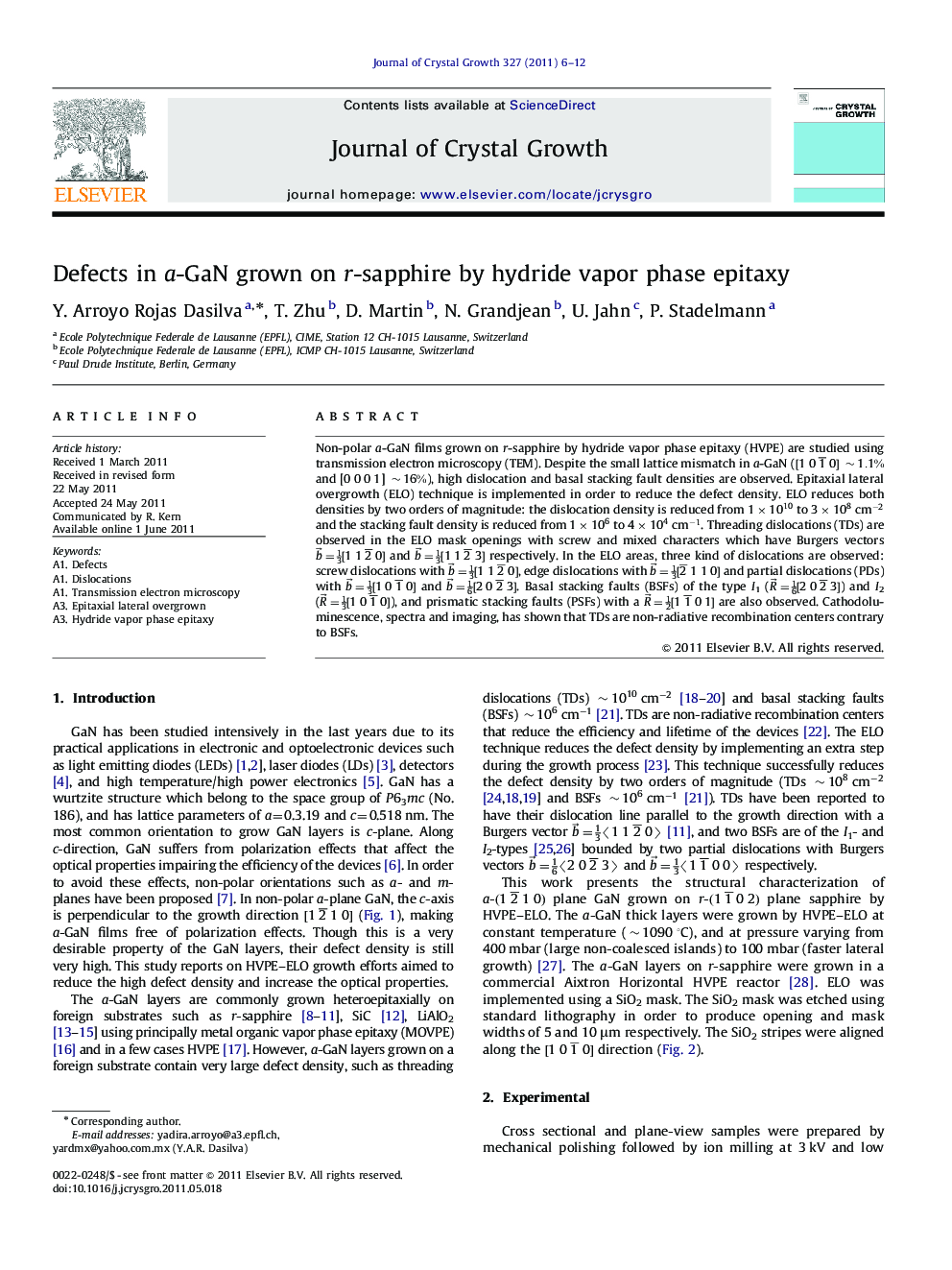| Article ID | Journal | Published Year | Pages | File Type |
|---|---|---|---|---|
| 1792144 | Journal of Crystal Growth | 2011 | 7 Pages |
Non-polar a-GaN films grown on r-sapphire by hydride vapor phase epitaxy (HVPE) are studied using transmission electron microscopy (TEM). Despite the small lattice mismatch in a -GaN ([101¯0]∼1.1% and [0 0 0 1] ∼16%∼16%), high dislocation and basal stacking fault densities are observed. Epitaxial lateral overgrowth (ELO) technique is implemented in order to reduce the defect density. ELO reduces both densities by two orders of magnitude: the dislocation density is reduced from 1×10101×1010 to 3×108cm−2 and the stacking fault density is reduced from 1×1061×106 to 4×104cm−1. Threading dislocations (TDs) are observed in the ELO mask openings with screw and mixed characters which have Burgers vectors b⇒=13[112¯0] and b⇒=13[112¯3] respectively. In the ELO areas, three kind of dislocations are observed: screw dislocations with b⇒=13[112¯0], edge dislocations with b⇒=13[2¯110] and partial dislocations (PDs) with b⇒=13[101¯0] and b⇒=16[202¯3]. Basal stacking faults (BSFs) of the type I1 (R⇒=16[202¯3]) and I2 (R⇒=13[101¯0]), and prismatic stacking faults (PSFs) with a R⇒=12[11¯01] are also observed. Cathodoluminescence, spectra and imaging, has shown that TDs are non-radiative recombination centers contrary to BSFs.
► We made the structural characterization of a-plane GaN layers by electron microscopy. ► We observed high defect density in the a-GaN layers. ► Threading dislocations and basal stacking faults are the main defects in the layers. ► Threading dislocations and basal stacking faults have an influence on cathodoluminescence.
